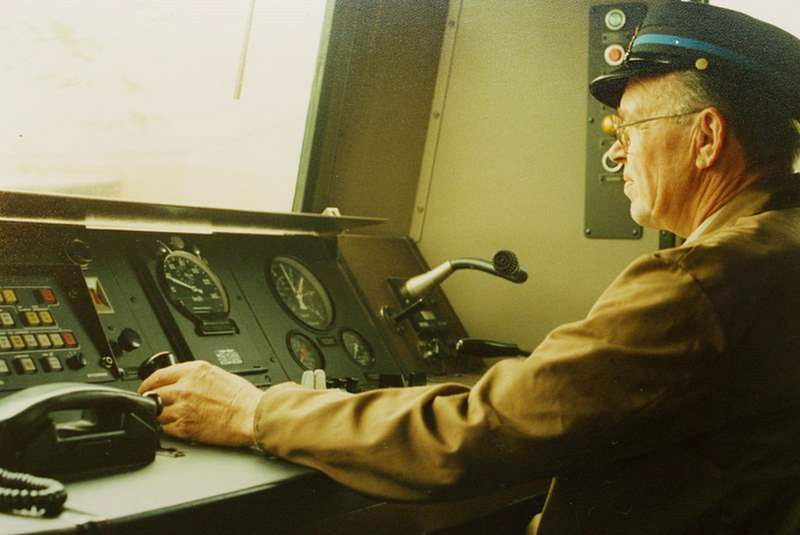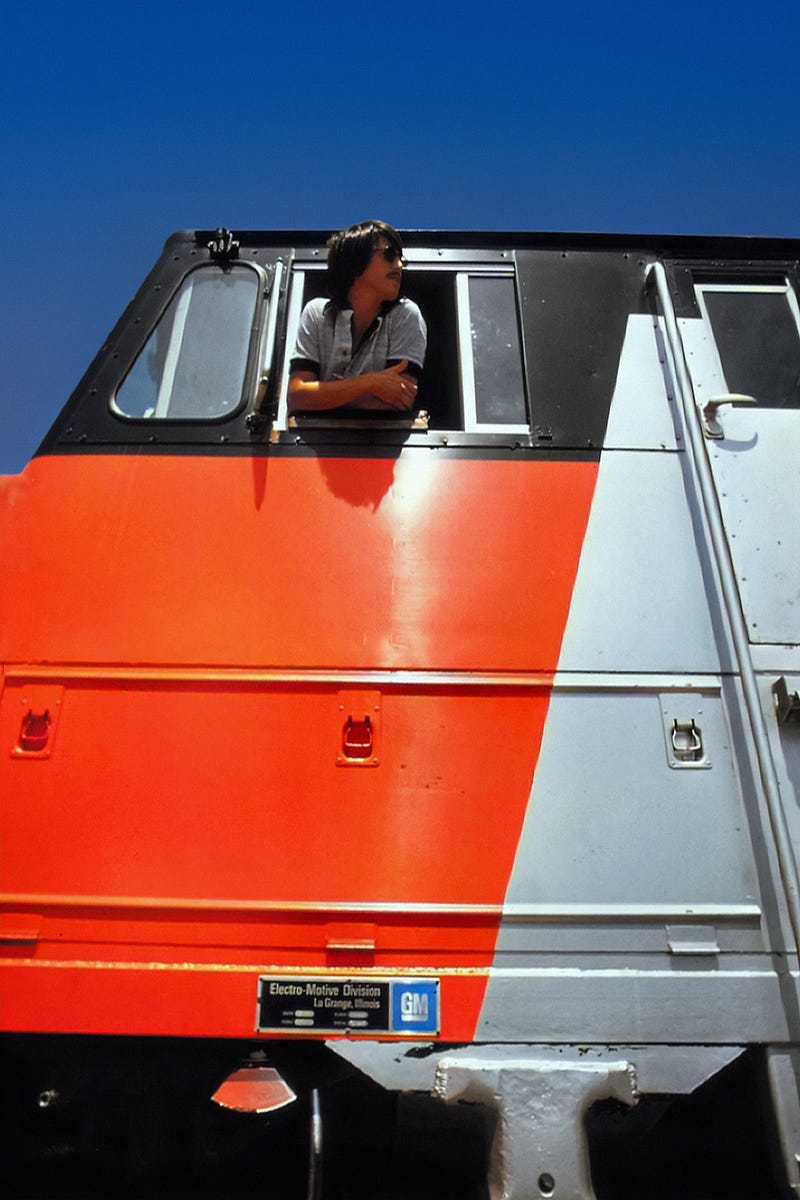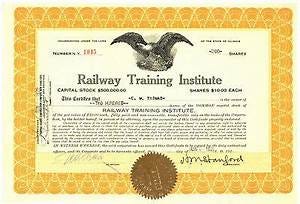How to Pursue a Career as a Train Driver: A Comprehensive Guide
Written on

Dear Reader,
I embarked on a journey to explore what it takes to become a train driver. If this career interests you, it's crucial to grasp the requirements. Mastering the mechanics of locomotives and understanding railway operations is vital for safely transporting passengers and freight.
This article will outline the prerequisites necessary for this profession, which I found quite intriguing, and I hope you will too.

Introduction
A train driver, also known as a locomotive engineer or railroad engineer, is responsible for operating trains. There are various roles available, including local positions that allow you to stay closer to home or regional jobs that require more travel. These positions often come with union benefits such as job security and pensions.
Basic Requirements
To qualify for most railroad positions, applicants must be at least 18 years old and possess a high school diploma or GED. Those with a GED must pass a challenging examination, and candidates for engineering roles must be at least 21.
Entry-level positions in the railroad industry require training to grasp the fundamentals of railroad operations. Community and state colleges offer courses and associate degrees in railroad operations and locomotive engineering. You can find programs that collaborate with local railroads online. A helpful resource is Railroad Conductor Training Programs and Schools (learn.org).
Many locomotive engineers start their careers as conductors, railroad yard engineers, switch operators, or yardmasters, allowing them to familiarize themselves with policies, operations, and routes before transitioning to driver training.

Applications can be submitted online via railroad websites. It’s advisable to explore various railroad jobs through online platforms. RailServe.com is a great resource for job listings. For those interested in driving commuter or subway trains, inquiries should be directed to public transit authorities. Job fairs hosted by community colleges and local universities often feature railroad companies.

Railroads typically seek candidates who:
- Are of legal age (18 for most jobs, 21 for locomotive drivers)
- Hold the necessary educational qualifications (high school diploma or GED)
- Are physically capable
- Demonstrate strong leadership qualities
- Possess decision-making skills
- Have good organizational abilities
- Are familiar with machinery
- Exhibit basic literacy in reading, math, and simple computing
- Can work independently and collaboratively
- Are able to learn and follow procedures and guidelines
- Meet the minimum age and pass hearing and vision tests
- Undergo periodic drug screenings
- Master all operational procedures and route details
Training
Training encompasses both classroom instruction and hands-on experience, including the use of train simulators and real trains. Some railroads provide onsite training, while others may require attendance at a centralized training facility for two months or longer.
Amtrak, for instance, mandates that locomotive engineer trainees complete 8 to 10 weeks at their training center in Wilmington, Delaware, before commencing on-the-job training.
Railroad Conductor Training covers:
- Safety standards
- Air brake operation
- Operational code rules
- Railroad policies and practices
- Train handling
- Railroad terminology
- Technical skills
- The history of railroading
- Business ethics
- Conductor service
- General operating rules
- Railroad Conductor Training Programs and Schools (learn.org)
Institutions offering railroad conductor training programs include:
- Dakota County Technical College (Rosemount, MN)
- Gateway Community College (New Haven, CT)
- Bucks County Community College (Newtown, PA)
- Johnson County Community College (Overland Park, KS)
- Sacramento City College (CA)
These examples represent just a fraction of the opportunities available. For more options, refer to "The 10 Best Schools For Becoming a Railroad Worker: Degree and Job Info" on Premium Schools.

Certification
Training programs prepare candidates for certification, which the Federal Railroad Administration mandates that each railroad company administer. The written examination assesses knowledge of the railroad's operational practices, equipment inspection procedures, train route familiarity, and Federal safety regulations.
There are three certification levels based on experience and job specifications: Student Engineer, Locomotive Servicing Engineer, and Train Service Engineer. Train service engineers are the most experienced and skilled, responsible for operating trains with attached cars. Locomotive servicing engineers operate engines without cars, while student engineers work under the close supervision of an instructor.
A skills assessment tests knowledge of operational practices, equipment inspection, route familiarity, and Federal safety regulations. Trainees must show their ability to apply their knowledge while operating a train or simulator. If a trainee fails the skills test, the Federal Railroad Administration (FRA) allows for a retest.
Candidates must master their assigned route's physical aspects. Railroad companies determine the testing methods, often using train simulators.
Essential skills include:
- Concentration: The ability to maintain focus on tasks for prolonged periods.
- Hand-eye coordination: The capacity for visual input and hand movements to work together for precise physical tasks.
- Visual acuity: The ability to perceive objects and details from a distance, with peripheral and color vision being crucial.
- Communication: The ability to effectively convey information to others.
Once employed by a railroad company, the FRA mandates periodic retesting and additional training when new routes are assigned.
Working Conditions
Train drivers often endure long, irregular hours, which can include nights, weekends, and holidays. They may need to be on standby, prepared to work at short notice, and work in challenging weather conditions, including extreme temperatures inside train cars.
Drivers typically work in spacious, climate-controlled environments that allow for movement but must contend with constant noise, vibrations, and jolting movements of the train.
Train drivers may face extended absences from home, with FRA regulations capping shifts at 12 hours per work period.
Earnings and Job Outlook
According to the United States Bureau of Labor Statistics (BLS), train drivers earn an average annual wage of $71,870. Earnings can vary based on the locations of routes; for instance, drivers in states like Nebraska, California, Montana, Minnesota, and Missouri can earn over $77,000.
The BLS forecasts a 6% job growth from 2020 to 2030, driven by an anticipated rise in freight transported by rail.
Alternatives
If the conventional path doesn’t suit you, the Nevada Northern Railway offers a unique opportunity to sign up as a diesel locomotive engineer for a day. This experience includes operating locomotives historically used for hauling ore, with an emphasis on safety and preparation.
Participants learn to operate the locomotive with guidance from an instructor, traversing a scenic 14-mile round trip through tunnels and steep grades. The cost for this experience is $760 for members and $895 for non-members.
Other options include operating freight trains, steam locomotives, or even a combination of both. Alternatively, you can simply enjoy a train ride.
If you enjoyed this article, please consider supporting my writing journey on Medium by following me and clapping for my work. Your readership inspires me to continue creating content.
Thank you for taking the time to read my work. Your support is greatly appreciated!